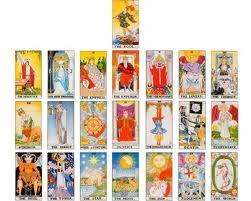Six Core Power Archetypes: First Step in Mastery
Mastering ourselves is the first step in becoming a “Master of the Universe.”
The Kabbalistic Tree of Life: A Roadmap for Personal Mastery
Several millenia ago, some very insightful mystics and seers somehow discerned that the “roadmap to God-consciousness” (and complete mastery of who they were as human beings) could be described as traversing through various “centers” or “realms of existence.” They called these “centers” Sephiroth, and organized them in a map that has been called, throughout the ages, the Tree of Life.
There are ten Sephiroth. (These are the circles on the Tree of Life to the left.) Each Sephiroth represents something very specific – not only a “plane of existence” but also an aspect, or emanation, of God.
 
 
The Kabbalistic Tree of Life
These aspects (Sephiroth) are organized in a logical manner. The “softer, gentler, kinder” ones comprise the Pillar of Mercy (on the right), and the “harsher,” more rigorous ones comprise the Pillar of Severity (on the left).
There are, potentially, 10×9/2 different connections between them. (Each one of the ten can connect with each of the remaining nine, and then these total paths need to be divided by two, so that they aren’t counted twice.) This means that there are potentially 45 different “connection paths.” In the Kabbalistic Tree of Life, though, only half of these paths – twenty-two of them – are actually defined and used.
This means that getting from one “center” (or state of consciousness, or realm of existence) to another is not just a “random-jump” sort of thing, but more like an ordered progression. Each step in this ordered progression has a certain meaning, and that meaning corresponds to an aspect of human experience. In fact, it corresponds to a significant step in our adult life journeys.
 
The Three Adult Life-Journeys
The last blogpost discussed this Tree of Life, and how the Major Arcana (from the Tarot) relate to the pathways between the Sephiroth.
We identified three sequences of seven steps (Major Arcana) each. Each of these sequences is a major adult life journey. From the previous blogpost, we recall that these are:
- The Worldly Sequence: We access and cultivate each of six Core Power Archetypes, and integrate them – we are able to use each one as appropriate.
- Turning Inwards: We begin to release our ego. At the end of this sequence, we start to access and cultivate intrinsic life energy, or ch’i.
- The Great Journey: A time of destroying the last of the old “structures” that keep us imprisoned, leading to full realization of our life’s purpose and being released to do our “great work.”
 
The Worldly Sequence: Cultivating and Integrating Our Six Core Power Archetypes
Our first adult life journey takes us through the Worldly Sequence. During this time, we learn to cultivate each of the six Core Power Archetypes, plus a seventh step (integration):
- Magician (Major Arcana Card I): Power to create “something from nothing.”
- High Priestess (Major Arcana Card II): Contemplative inner wisdom.
- Empress (Major Arcana Card III): Nurturing and caring; runs on oxytocin, the “bonding hormone.”
- Emperor (Major Arcana Card IV): Strength, stability, structure, and order; the perennial “Program Manager,” thrives on building and maintaining structures and things (ranging from a business process to an actual empire).
- Hierophant (Major Arcana Card V): One of the least understood but most important archetypes, this is the mentor/teacher/guide, typified by fictional characters ranging from Albus Dumbledore (in the Harry Potter series) to Mr. Miyagi (in the Karate Kid) to (of course) Yoda and Obi-Wan Kenobi (in Star Wars).
- Love-Goddess (Major Arcana Card VI): All about pleasure and play; romance, love-making, sensual pleasure in all its forms; she runs on dopamine, the “ecstatic pleasure” hormone.
Various blogposts, as well as sections in Unveiling: The Inner Journey, have described these various archetypes, as well as the seventh step, integration.
Most MOST Popular Post on the Six Core Power Archetypes and Integration:
- How important is it to gain each of your six Core Power Archetypes?: Your Six Core Power Archetypes: What Happens When One is Missing?
The OTHER Most Popular Posts on the Six Core Power Archetypes and Integration:
- The Unveiling Six Core Power Archetypes map to six of the eight of the Jungian Psychological Types, two more are “reserve battery” or “rest and recharge” archetypes: Eight Core Power Archetypes
- Mapping the Unveiling archetypes correspond to the Jungian Psychological Types: Unveiling Archetypes and the Jungian Dimensions
- Moore and Gillette identify four masculine archetypes; two of these are an exact match to the Unveiling/Jungian types, one is a partial, and one is a mismatch (read why!): Moore and Gillette, King, Warrior, Magician, Lover: 2 1/3 Out of 4 Ain’t Bad!
- Neurohormones and their potential relation with core archetypes: Dopamine, Oxytocin, and Estrogen: A Potent, Heady Mix
- Your eight Core Power Archetypes can help you with your Franklin-Covey roles and identifying life-priorities: The Unveiling Archetypes and the Franklin-Covey Roles: A Useful Synergy
Other Related Posts:
- Introducing the Major Arcana and their relation with core archetypes: Finding Peace and Happiness Through the Power of Your Archetypes
- Characters in The Lord of the Rings embody the six Core Power Archetypes: The Lord of the Rings: A Classic “Inner Journey”?
- What is integration?: Integration: The “Final Step” of Your Power Journey’s First Stage







